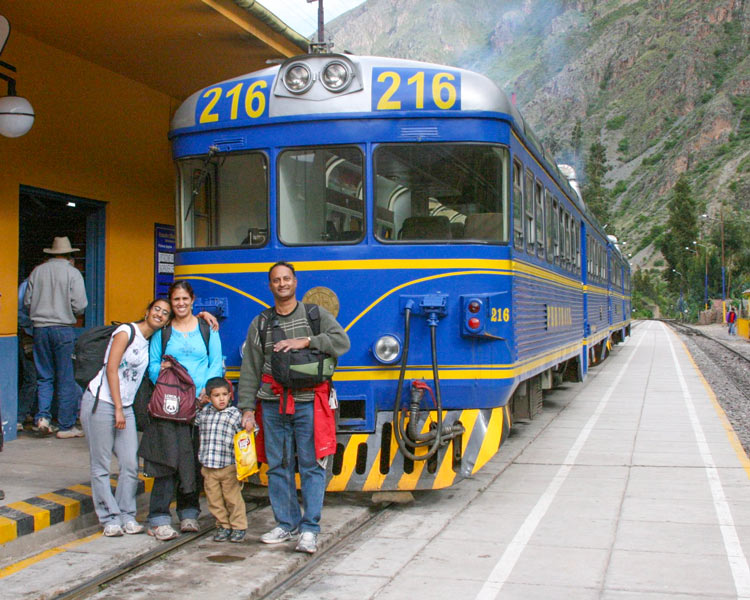If you’re planning your visit to Machu Picchu, you’ve probably heard about the “bimodal service,” an option that combines bus and train travel in a single trip. But is it really worth it? What advantages does it offer compared to a direct train? And what details should you keep in mind to avoid common mistakes? In this article, I explain how it works, its pros and cons, and why many travelers choose it… or reject it.
Content
How does the bimodal service (bus + train) work?
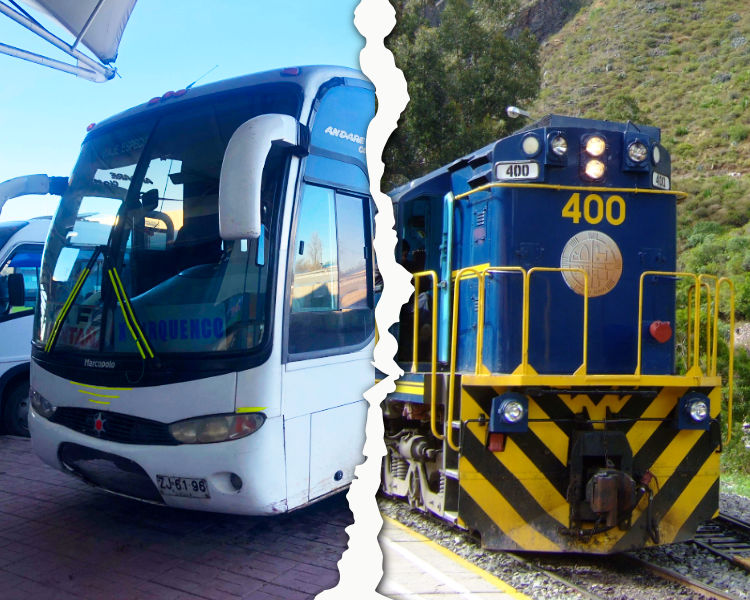
What does the bimodal service to Machu Picchu consist of?
The bimodal service is a combined transportation option that combines two modes of transport: bus and train. It was created to facilitate access to Machu Picchu from Cusco when the direct train route is unavailable or less practical due to logistical issues. This service is generally offered by rail companies (such as PerúRail or Inca Rail) and includes a bus transfer from Cusco to the train station in Ollantaytambo.
This system allows travelers to purchase a single ticket covering the entire journey, without having to separately coordinate ground and rail transportation. The bimodal service is ideal for those seeking convenience and organization on a long trip, as both stages (bus and train) are scheduled and connected on continuous schedules, avoiding long waits between journeys.
What is the exact route of the bimodal service?
The most common bimodal service route begins in Cusco, where passengers board a tourist bus at the Wanchaq terminal or on Av. El Sol, depending on the company. This bus travels along the Cusco-Urubamba-Ollantaytambo highway, taking approximately 1 hour and 45 minutes. Once in Ollantaytambo, passengers disembark and transfer directly to the train station to continue their journey to Aguas Calientes.
In some cases, especially with Inca Rail services, the bus may depart from Cusco to the train station in the Pachar area or directly to the Ollantaytambo station. From there, take the train that runs along the Urubamba River Valley to Aguas Calientes, the closest town to Machu Picchu.
How long is the trip in total?
The total journey time for the bimodal service from Cusco to Machu Picchu is usually between 4.5 and 5 hours, depending on the schedule and type of train selected. The first bus journey, from Cusco to Ollantaytambo, takes approximately 1 hour and 45 minutes. There is then a short wait for the connecting train before boarding the train, which takes between 1 hour and 45 minutes and 2 hours to reach Aguas Calientes.
Travel time may vary slightly depending on traffic, bus punctuality, and whether the train is a regular one or has multiple stops. During peak season or adverse weather conditions, the trip may take a little longer. Therefore, it’s important to always allow enough time if you have tickets to Machu Picchu or a return train on the same day.
Where do you take the bus and where do you take the train?
The bimodal service bus can be boarded in Cusco at designated stops by each company. PeruRail buses, for example, depart from the Wanchaq station or El Sol Avenue. IncaRail typically departs from its bus terminal on El Sol Avenue. It’s important to arrive at least 30 minutes early, as buses depart punctually based on train schedules.
The train takes you to the Ollantaytambo or Pachar station, depending on the service chosen. Once at the station, passengers simply need to show their combined ticket (bus + train) and board at the indicated time. The stations have waiting rooms and basic amenities. The train will take you to Aguas Calientes, from where you can take a bus to the Machu Picchu gate.
Types of bimodal services
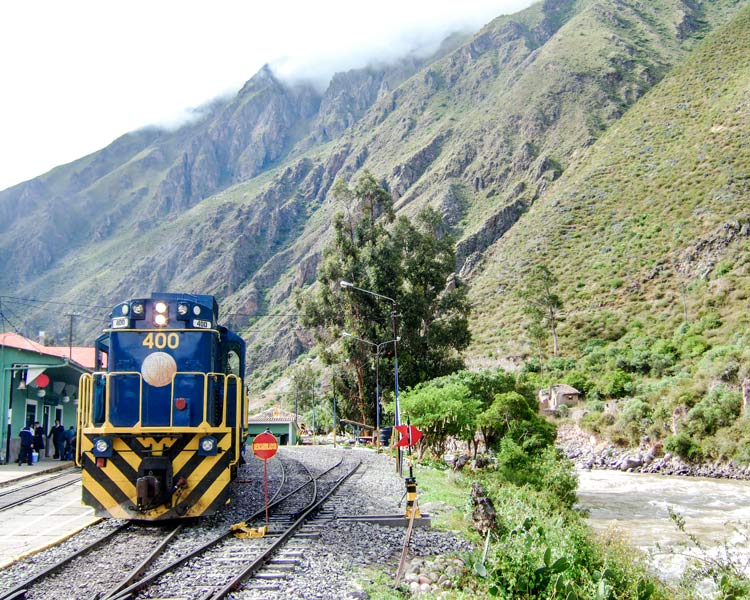
Which companies offer bimodal service?
The main companies offering bimodal service to Machu Picchu are PerúRail and Inca Rail. Both companies manage the complete connection from Cusco to Aguas Calientes, combining one section by road and another by train. This service is generally available year-round, although it is more popular during the high season (April to October).
Each company has its own routes, schedules, and boarding points. PerúRail, for example, departs from the Wanchaq station or Av. El Sol, while Inca Rail departs from its private terminal, also in downtown Cusco. In both cases, the ticket includes bus and train service and can be purchased directly on their website or at authorized ticket offices.
What types of trains are included in the bimodal system?
The bimodal service includes several types of trains depending on the passenger’s chosen category. PerúRail offers options such as the Expedition and Vistadome, while Inca Rail includes categories such as The Voyager, The 360°, and The First Class. Each type varies in comfort, onboard amenities, and price.
Although all these trains are part of the bimodal system, it’s important to keep in mind that not all categories are available at all times. Availability will depend on demand and the day of travel. Therefore, when booking, pay attention to the type of train you are selecting within the bimodal package.
Note:
If you’re taking the bimodal service, it’s best to book departures early in the day. This way, you’ll have more time in Machu Picchu and avoid delays due to traffic or changing weather. It’s also easier to coordinate bus and train schedules.
Can you choose only train without bus?
Yes, it is entirely possible to choose only the train without the bus service. This option is ideal for those already in the Sacred Valley or who wish to make their own way to the Ollantaytambo station. When purchasing only the train ticket, simply show up at the corresponding station with your ID and boarding pass.
Both PerúRail and IncaRail offer separate train tickets from Ollantaytambo to Aguas Calientes. This option provides more flexibility for travelers who prefer to arrange their own ground transportation from Cusco. It’s important to arrive at the station at least 30 minutes before train departure.
Pros and cons of bimodal service
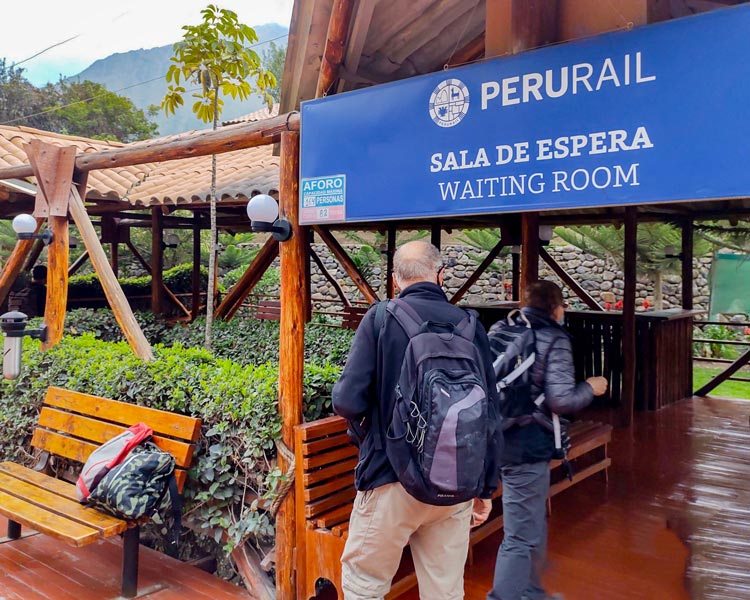
Advantages of the bimodal service to get to Machu Picchu
One of the main advantages of the bimodal service is the convenience of having your entire trip organized from Cusco to Aguas Calientes with a single ticket. You don’t need to worry about coordinating ground transportation or getting to the train station on time, as the companies ensure both parts of the trip are well connected. This reduces the risk of missing connections due to delays or poorly planned schedules.
Another advantage is that the service is operated by reliable and experienced companies, ensuring safety and punctuality. You can also choose from different train categories based on your budget and comfort level. All of this makes it a practical option for those looking to avoid complications or traveling to Machu Picchu for the first time.
Disadvantages of bimodal service compared to other options
One disadvantage of the bimodal service is that it can be more expensive than other ways to get to Machu Picchu, especially when compared to the alternative route via Hidroeléctrica. The latter option, although longer and more tiring, is often chosen by budget-conscious travelers. Others prefer to take a collective taxi to Ollantaytambo and then take the train from there, which can be cheaper than the full package.
Another disadvantage is the lack of schedule flexibility, as the bus itinerary is completely tied to the train schedule. If you miss the bus in Cusco, you’ll likely miss the train as well. Additionally, some people may feel they spend too much time sitting between the bus and the train, especially if they’re looking for a more active experience or one with stops in between.
Is bimodal a good option if I have little time?
Yes, the bimodal service is one of the most recommended options if you’re short on time, as it’s designed to optimize transfers and avoid unnecessary delays. By including both the bus and train in a single ticket, you don’t have to search for separate transportation or worry about connections. This allows you to get to Aguas Calientes safely and quickly in half a day.
Additionally, bimodal bus schedules are often coordinated with Machu Picchu entry times, giving you the option of visiting on the same day or the next day without complications. This is an efficient option for those short on time or who only have one or two days available to explore Machu Picchu.
Tips and recommendations
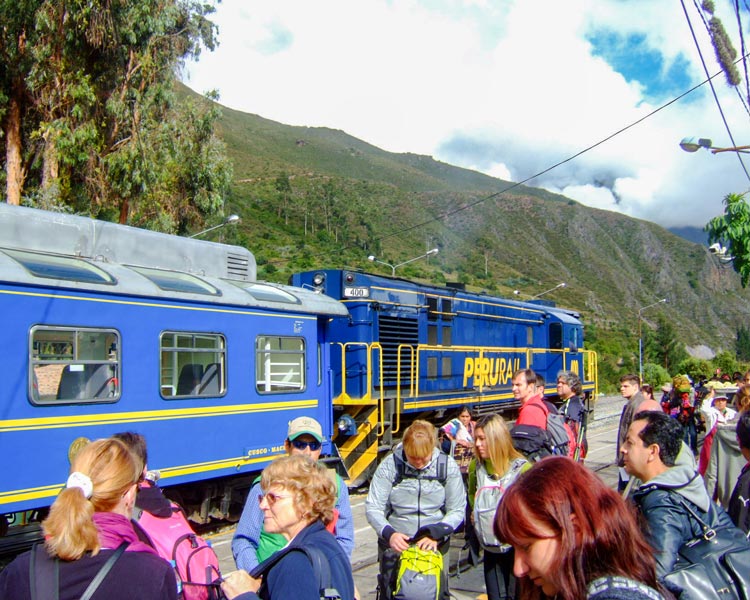
When is it best to use bimodal service?
The bimodal service is most convenient during the peak tourist season (April to October), when demand is highest and direct trains from Cusco are less available. It’s also recommended for group or first-time travelers, as it simplifies logistics by combining bus and train travel into a single ticket, facilitating travel without having to organize everything separately.
Another ideal situation for using the bimodal service is when you have a tight schedule and don’t want to take any risks. Having pre-coordinated schedules between bus and train reduces the possibility of delays or missed connections. Additionally, if you’re in Cusco and have no way to get to Ollantaytambo on your own, the bimodal service guarantees safe and direct transportation to the train station.
Note:
Make sure you book this service with an agency that can coordinate both journeys and provide assistance throughout the trip. Some platforms, like ours, allow you to book in one place and have support if any issues arise.
Tips to avoid missing the train or bus
One of the most important tips is to arrive well in advance of the bus departure point in Cusco. Ideally, you should arrive at least 30 to 40 minutes early, as buses depart punctually and don’t wait for late passengers. Double-check the boarding direction on your ticket, as some departures are from Wanchaq station and others from Av. El Sol, depending on the company.
It’s also key to have all your documents on hand: a valid ID or passport, a printed or digital ticket, and your Machu Picchu entrance reservation if you’re visiting on the same day. Don’t forget to check the weather and traffic in Cusco, especially if you’re traveling during the rainy season, as any delays in the city can cause you to miss your bus… and therefore, your train.
What mistakes should you avoid when choosing this service?
A common mistake is not double-checking the departure location and bus schedule in Cusco, which can result in arriving late or even arriving at the wrong station. Another mistake is assuming the bimodal service is faster than other options, when in reality it takes more than four hours. If you don’t take this into account, you could misplan your day and miss admission to Machu Picchu or your return train.
You should also avoid purchasing bimodal service at the last minute, as seats sell out quickly during peak season. If you don’t book in advance, you could end up missing out on space or end up paying more. Finally, many travelers forget to bring water, snacks, or light clothing for the journey, which can make the long trip more uncomfortable than necessary.
Frequently Asked Questions
-
Where does bimodal service begin and end?
The bimodal service begins in Cusco, with a bus ride to Ollantaytambo or the designated train station, and ends at the Machu Picchu Pueblo station (Aguas Calientes), combining bus and train service in a single ticket.
-
Does the bimodal service include admission to Machu Picchu?
No. The bimodal service only covers transportation (bus + train). Admission to Machu Picchu must be purchased separately.
-
Is the direct train better or the bimodal one?
It depends on the departure point and budget. The direct train from Cusco (Poroy or San Pedro stations) is more convenient, but has limited schedules and is more expensive. The bimodal train offers more departures and is generally more flexible.
-
How much luggage can you carry on the bimodal?
Only one backpack or small bag (maximum 5 kg and small size) is allowed. Large luggage is not permitted on the train.
-
Can the bimodal journey be made in a single day?
Yes, it is possible to go and return on the same day, but it is recommended to spend at least one night in Aguas Calientes to avoid rushing or inconveniences.
-
What happens if there are delays on the bus?
Companies usually coordinate schedules to avoid missing trains, but if there are unforeseen delays, you could miss your connection. It’s always recommended to depart on the first shift of the day.
-
Is it better to take the bimodal service from Cusco or from Ollantaytambo?
If you’re in Cusco, taking the bimodal bus from there is more convenient. But if you’re already in the Sacred Valley, leaving directly from Ollantaytambo saves time and avoids the bus trip.
-
Can I take just the train if I already have transportation?
Yes. You can purchase just the train ticket if you decide to make your own way to the Ollantaytambo station.
-
Do the bimodal service buses have a bathroom and air conditioning?
It depends on the company, but most bimodal tour buses have air conditioning. Not all have bathrooms on board, so it’s recommended to use the restroom before boarding.
-
Is it safe for elderly people or people with children?
Yes, the service is safe. It’s important to keep in mind the altitude of Cusco and that the bus ride can be a bit long (about 2 hours). Therefore, it’s important to bring water and snacks and travel calmly.
